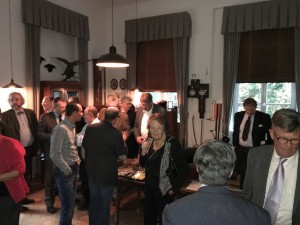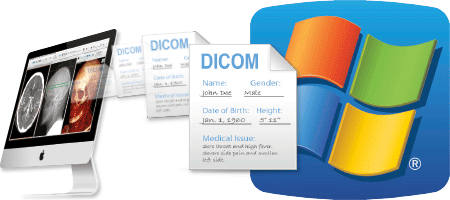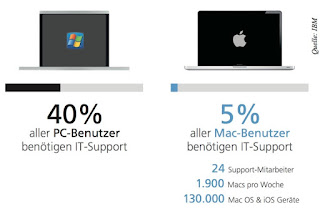Author: Der Arzt
Support the Roentgen Memorial at RSNA 2015
 On November 8th, 1895, Prof. Dr. Wilhelm Conrad Röntgen discovered a new kind of ray, which he
On November 8th, 1895, Prof. Dr. Wilhelm Conrad Röntgen discovered a new kind of ray, which he
called X-rays. A small laboratory located in the former Physical Institute of the University of Würzburg, now the University of Applied Sciences Würzburg, was the sight of one of the most important scientific breakthroughs in medical history.
The “Röntgenkuratorium Würzburg e.V.” was founded on December 3rd 1981, as a registered association to honor the memory of Prof. Dr. Wilhelm Conrad Röntgen.
The nonprofit organization designed, maintains and manages the Röntgen memorial located at the site where Röntgen first discovered X-rays, the former Institute of Physics at the University of Würzburg on Röntgenring 8.
Please explore the Memorial and consider making a single or sustaining membership donation to help preserve this historically important site.
If you want to learn more, visit us at RSNA 2015 at the aycan booth #7710.
Weblinks:
Roentgen Memorial website
Donate for the Roentgen Memorial
Become a sustaining member of the Röntgen Memorial
Download PDF
iOS and Mac in Radiology with aycan
Meet us at the Apple Store, North Michigan Avenue in Chicago on November 30th 2015 at 6:00 p.m. aycan and Apple will present it’s solutions for radiology at RSNA 2015. Sign up here…
120th anniversary of the discovery of X-rays
 On November 8th, 1895, Prof. Dr. Wilhelm Conrad Röntgen discovered a new kind of ray, which he
On November 8th, 1895, Prof. Dr. Wilhelm Conrad Röntgen discovered a new kind of ray, which he
called X-rays. A small 120Jahrelaboratory located in the former Physical Institute of the University of Würzburg, now the University of Applied Sciences Würzburg, was the sight of one of the most important scientific breakthroughs in medical history.
At this place the celebrarion started on Nov. 7th 2015 with the annual meeting of ISHRAD (International Society for History in Radiology). Chairman Prof. Thomas, UK and the delegates provided lectures about the history of radiology in Röntgen’s lecture hall.
On Nov 8th 2015 was a open house day of the Röntgen Memorial. More than 1000 people visited Prof. Röntgen’s lab.
A formal celebration organized by the City of Würzburg, the University of Würzburg, the University of Applied Sciences Würzburg-Schweinfurt and the Röntgenkuratorium e.V. with 200 invited guests was held.
Weblinks
Celebrating the 120th anniversary of the discovery of X-rays
120 Jahre Röntgenstrahlen in Würzburg
 Am 8.11.1895 entdeckte Wilhelm Conrad Röntgen die nach ihm benannten Strahlen. Am Ort der
Am 8.11.1895 entdeckte Wilhelm Conrad Röntgen die nach ihm benannten Strahlen. Am Ort der
Entdeckung wurde am 7.11.2015 mit der 5. 120JahreJahrestagung der ISHRAD (International Society for History in Radiology) unter Vorsitz von Prof. Adrian Thomas, UK im historischen Hörsaal Röntgens begonnen. Zahlreiche Teilnehmer (die weiteste Anreise hatten zwei Besucher aus Adelaide, Australien) aus der ganzen Welt hörten die Fachvorträge rund um das Thema Geschichte in der Radiologie.
Mac-basiertes RIS / PACS senkt Supportkosten deutlich
120 Jahre Röntgenstrahlen
 Vor 120 Jahren gelang Wilhelm Conrad Röntgen in Würzburg eine sensationelle Entdeckung. Die nach ihm benannten Strahlen, die die medizinische Diagnostik revolutionierten und aus Wissenschaft und Technik 120 Jahre nach der Entdeckung nicht mehr wegzudenken sind. Zu Recht ist Röntgen eine der weltweit bekanntesten Würzburger Persönlichkeiten. Seine Entdeckung in Würzburg wurde mit dem 1. Nobelpreis für Physik ausgezeichnet.
Vor 120 Jahren gelang Wilhelm Conrad Röntgen in Würzburg eine sensationelle Entdeckung. Die nach ihm benannten Strahlen, die die medizinische Diagnostik revolutionierten und aus Wissenschaft und Technik 120 Jahre nach der Entdeckung nicht mehr wegzudenken sind. Zu Recht ist Röntgen eine der weltweit bekanntesten Würzburger Persönlichkeiten. Seine Entdeckung in Würzburg wurde mit dem 1. Nobelpreis für Physik ausgezeichnet.
Anlässlich des Jubiläums ehren die Stadt Würzburg, die Universität Würzburg, das Röntgen-Kuratorium Würzburg e.V. und die Hochschule für angewandte Wissenschaften Würzburg-Schweinfurt das Andenken des genialen Physikers mit einer Reihe von Sonderveranstaltungen:
Zwischen Herbst 2015 und Frühjahr 2016 liefern Führungen, Vorträge, eine Ausstellung und ein Tag der offenen Tür spannende Informationen zu Wilhelm Conrad Röntgen und seiner herausragenden Entdeckung.
Weblinks:
Informationen der Stadt Würzburg
Röntgengedächtnisstätte
Mac vs. PC—Benefits Validated in IBM Study
 aycan has been using Apple Macintosh computers to run its medical solutions for over 10 years due in part to their intuitive interfaces and overall reliability. A recent study by IBM validates these and other benefits of choosing Mac computers over Windows PCs.
aycan has been using Apple Macintosh computers to run its medical solutions for over 10 years due in part to their intuitive interfaces and overall reliability. A recent study by IBM validates these and other benefits of choosing Mac computers over Windows PCs.
In the study posted on 9to5mac.com, IBM found that only 5% of Apple users contact IT support vs. 40% of Windows PC users. Because of this, the spending to replace Window’s PC’s with Mac’s is quickly offset by the lower support cost. In the article, IBM’s VP of Workplace-as-a-Service Fletcher Previn noted, “Every Mac that we buy is making and saving IBM money.”
In these times of cost constraints and budget cuts, hospitals and medical practices need to address reductions in IT spending and switching from PC’s to Macs is one way to significantly do that. aycan can show you how to integrate Mac-based RIS and PACS applications into your environment, so your organization can benefit by the type of cost savings outlined in the article.
Weblinks:
Integration of Mac Workstations
Mac-based RIS/PACS
Support-Aufwand für Mac-Systeme deutlich niedriger als für Windows-PCs
 Seit 10 Jahren stattet aycan professionelle PACS Anwender in Kliniken und Praxen mit Apple Macintosh Rechnern aus. Was den aycan Kunden bisher intuitiv klar war, ist die Tatsache, dass der Supportbedarf deutlich geringer als mit Windows-PCs ist. Die bessere Benutzerfreundlichkeit der Apple Systeme ist eine Binsenweisheit. Nun liegen erstmals messbare Ergebnisse dieser deutlich geringeren Supportlast vor.
Seit 10 Jahren stattet aycan professionelle PACS Anwender in Kliniken und Praxen mit Apple Macintosh Rechnern aus. Was den aycan Kunden bisher intuitiv klar war, ist die Tatsache, dass der Supportbedarf deutlich geringer als mit Windows-PCs ist. Die bessere Benutzerfreundlichkeit der Apple Systeme ist eine Binsenweisheit. Nun liegen erstmals messbare Ergebnisse dieser deutlich geringeren Supportlast vor.
 Seit dem 1. Juni dürfen die Angestellten von IBM selbst wählen, ob sie einen Mac oder Windows-PC nutzen möchten. Aktuell arbeiten 130.000 Anwender mit Mac und iOS Geräten und es werden 1.900 Macs pro Woche neu installiert. Der IT Help Desk bewältigt den Support mit 24 Mitarbeitern. Previn sagte, dass die Anschaffung der Macs durchaus kostenintensiver ist. Diese Mehrausgaben werden aber schnell und dauerhaft durch den geringeren Supportbedarf refinanziert. “Jeder Mac, den wir kaufen, bringt und spart IBM Geld”, führt Previn an.
Seit dem 1. Juni dürfen die Angestellten von IBM selbst wählen, ob sie einen Mac oder Windows-PC nutzen möchten. Aktuell arbeiten 130.000 Anwender mit Mac und iOS Geräten und es werden 1.900 Macs pro Woche neu installiert. Der IT Help Desk bewältigt den Support mit 24 Mitarbeitern. Previn sagte, dass die Anschaffung der Macs durchaus kostenintensiver ist. Diese Mehrausgaben werden aber schnell und dauerhaft durch den geringeren Supportbedarf refinanziert. “Jeder Mac, den wir kaufen, bringt und spart IBM Geld”, führt Previn an.

